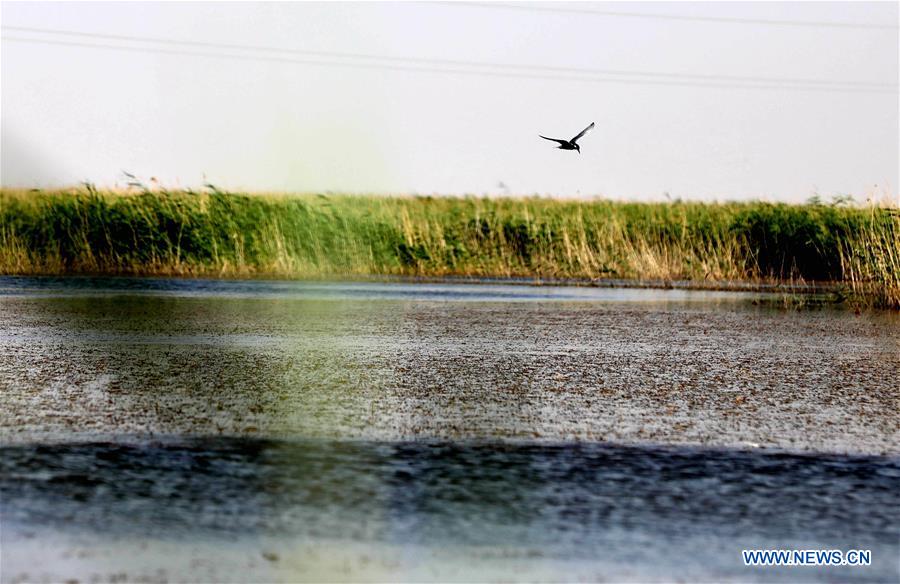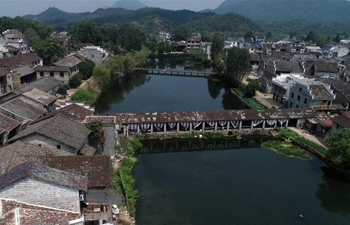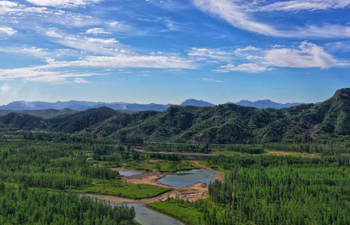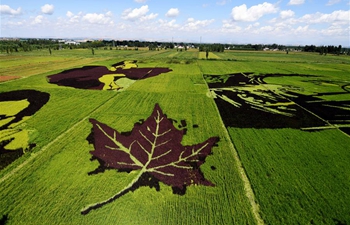
A migratory bird flies over the Qingtu Lake in Minqin County of Wuwei City, northwest China's Gansu Province, June 13, 2019. Once had been dried for around 50 years until 2010, the lake was revived due to years of desertification control efforts. Located in the convergence zone of the Loess Plateau, the Mongolian Plateau and the Qinghai-Tibet Plateau, Gansu Province in northwest China strides across various landforms including grasslands, forests, deserts, wetlands and mountains. In recent years, through persistent efforts on protecting water conservation area, containing desertification and resuming forests from farmlands, the ecological environment of Gansu has witnessed continuous improvement. Qilian Mountains, an important protection barrier of ecological system in western China, has nourished vast lands in the Hexi Corridor with rich snowmelt, which enables farmlands there to become a major production area of commodity grain and industrial crops. Gannan Tibetan Autonomous Prefecture in southern Gansu acts as an ecological function area for water supplement of the Yellow River and biodiversity of Qinling-Bashan mountainous regions. More than 7.3 million mu (about 486,667 hectares) of wetland in Gannan supplies over ten billion of cubic meters of water to the Yellow River. Featuring various landscapes and colorful cultures, Gansu Province has become a great attraction among tourists at home and abroad. From Aug. 25 to 27, the "Gansu Day" event is held at the ongoing Beijing International Horticultural Exhibition, in which a diversified Gansu is exhibited. (Xinhua/Guo Gang)















